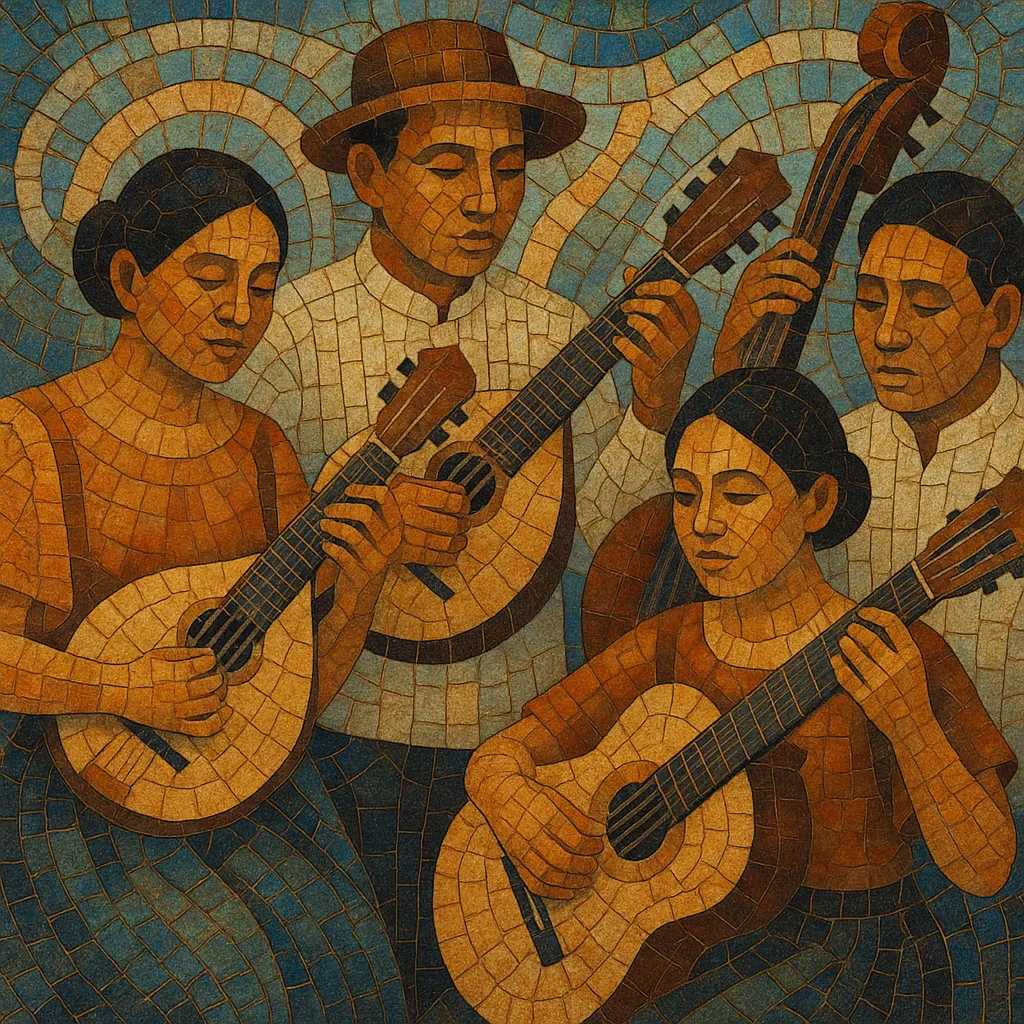
Filipino rondalla is a plucked-string ensemble tradition featuring instruments such as the bandurria (soprano), octavina or laúd (alto/tenor), guitar (rhythm/harmony), and a bass (double bass or bajo de uñas). It is performed with plectrums, and a signature shimmering sound comes from sustained tremolo picking and tightly voiced counter-melodies.
Emerging during the late Spanish colonial era and flourishing in the early American period, the rondalla became a default sound for Philippine folk dances, serenades, and community festivities. Its repertoire spans arrangements of Spanish-derived dances (jota, fandango, pasodoble), Filipino love songs (harana, kundiman), folk dances (tinikling, pandanggo, balse, cariñosa), and contemporary medleys, often rendered with lyrical melodies, diatonic harmony, and buoyant dance rhythms.
Filipino rondalla took root in the late Spanish colonial era when Iberian plucked-string traditions and dances were localized in the Philippines. Ensembles adapted Spanish instruments—especially the bandurria and laúd—into a Philippine context, adding the octavina and integrating guitar and bass accompaniment. Early repertory centered on Spanish dances (jota, fandango, pasodoble, habanera) and local serenade and art-song traditions (harana, kundiman).
Under the American period, rondalla ensembles became institutionalized through schools, community groups, and theater. They provided the quintessential accompaniment for folk dances and sarswela/zarzuela performances, and arrangements of folk melodies flourished. The ensemble’s plectrum tremolo and melody–countermelody texture became a hallmark of public events, radio programs, and community celebrations.
After World War II, rondalla ensembles proliferated nationwide. The formation of youth competitions—especially NAMCYA (National Music Competitions for Young Artists, founded in 1973)—raised performance standards, pedagogy, and arranging practices, codifying common instrument roles and notational conventions. University and city-based groups cultivated both traditional and newly commissioned repertoire.
Since the 2000s, festivals like the International Rondalla/Plucked String Festival (Cuerdas ng Pagkakaisa) have connected Philippine ensembles with global plucked-string traditions. Diaspora groups in North America broadened audiences and pedagogy. Contemporary arrangers now incorporate medleys, pop/OPM themes, and cross-cultural collaborations while preserving the classic dance repertoire and the ensemble’s luminous tremolo-driven sound.

